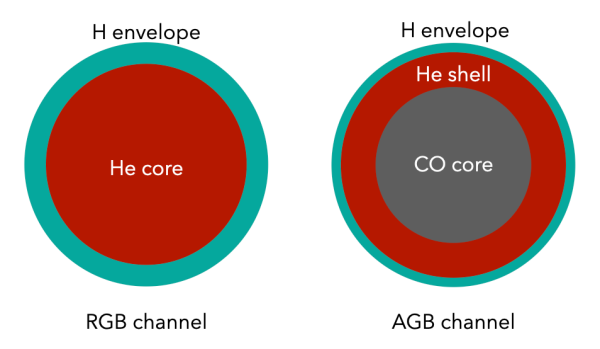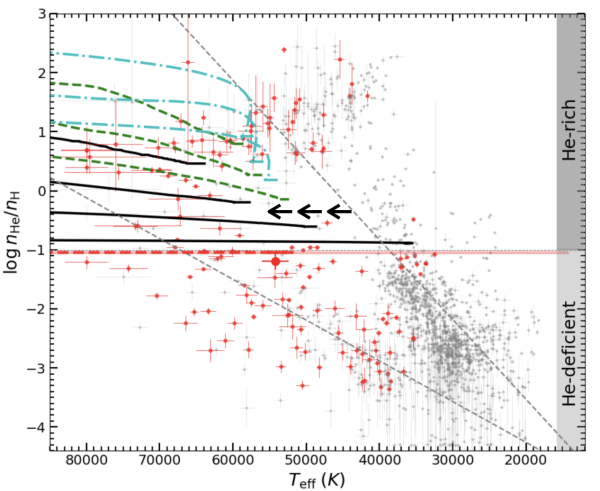Recently, the Astrophysical Journal has published the research of Dr. LI Zhenwei and his collaborators from Yunnan Observatories, Chinese Academy of Sciences (CAS), along with Dr. ZHANG Yangyang from the Zhoukou Normal University. This work proposed a new formation model for massive hot subdwarfs, offering explanations for a subset of helium-rich hot subdwarfs observed in the cosmos.
Hot subdwarfs, a unique type of extreme horizontal branch star. Some of these stars, discovered in close binaries, are considered as potential gravitational-wave (GW) sources for future space-borne GW detectors. The distinctive chemical peculiarities, particularly the helium (He) abundance on their surfaces, serve as valuable tools for comprehending the formation and evolution of these celestial bodies. Hot subdwarfs are generally formed through binary interactions, with the ignition of the He core when the donor initiates mass transfer near the red giant branch (RGB) ’s tip. This scenario, known as the RGB channel.
However, the recent discovery of the star SMSS J1920, the third known binary consisting of a hot subdwaf star and an accreting white dwarf, presents a clear contradiction to the RGB channel.The strong Ca H and K lines with a blueshift suggest that the binary likely originated from the recent ejection of the common envelope (an ejection age of ~10000 years). In contrast, for hot subdwarfs produced from the RGB channel, the time since the common envelope (CE) ejection to the current state spans several tens of million years.
To explain the formation of SMSS J1920, researchers proposed a new route towards hot subdwarfs. This involves a hot subdwarf produced from the CE ejection process with an asymptotic giant branch (AGB) star, termed the AGB channel. Unlike the hot subdwarf from an RGB star, a hot subdwarf from an AGB star contains a large carbon and oxygen (CO) core, helium-burning shells, and a hydrogen envelope.
Utilizing state-of-the-art stellar evolution code, researchers successfully constructed the evolutionary models of the hot subdwarfs from the AGB channel. The simulated results can explain most of the important observed parameters of SMSS J1920, such as the evolutionary age, hot subdwarf mass, effective temperature and surface gravity, etc.
The AGB channel can explain not only SMSS J1920 but also some observed special hot subdwarfs. Researchers discovered that the AGB channel could produce hot subdwarfs with masses exceeding 0.48 times of the mass of the Sun. In the RGB channel, however, most hot subdwarfs have masses of less than 0.48 times of the mass of the Sun. This suggests that a part of the massive hot subdwarfs may originate from the AGB channel.
Moreover, researchers also found that hot subdwarfs from the AGB channel generally exhibit high helium(He) abundances, which can be attributed to partial hydrogen burning in the envelope. Therefore, the hot subdwarfs from the AGB channel can naturally explain a part of He-rich hot subdwarfs observed in the cosmos. This work provides a new route to hot subdwarfs, while also shedding light on the origin of observed special hot subdwarfs.

Figure 1, the structures of hot subdwafs produced from RGB and AGB channels. Image by LI.

Figure 2, helium abundance vs. effective temperature for the observations and hot subdwarfs’ tracks. The thick red, black, green, cyan lines are for the theoretical results, grey and red dots are for the observational sample. Image by LI.
Contact:
LI Zhenwei
Yunnan Observatories, CAS
Email: lizw@ynao.ac.cn